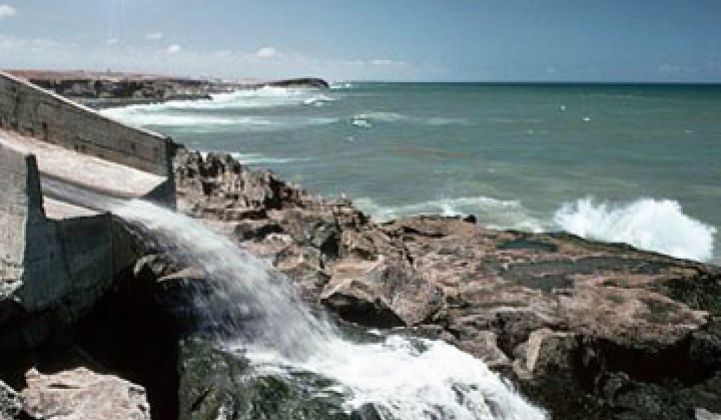The tap hasn’t run dry -- yet.
A growing population, prolonged droughts and chronic food shortages that can be tied to irrigation have set off the warning alarms that conflicts over rivers and lakes could be just on the horizon, particularly in emerging nations.
And even in more developed nations, water has become a problem. Australian farmers have seen their livelihoods dry up because of droughts. Bostonians were forced to boil water for drinking earlier this year after a water main burst. In Chicago, 62 percent of city water gets lost before it reaches the drain. Rationing is a growing reality in California.
While some claim water is the new oil, there are differences. First, we actually have quite a bit of it and it is infinitely recyclable. Approximately 1 billion cubic meters falls from the skies to replenishes rivers, lakes and other types of reservoirs annually, according to Haggai Scolnicov, the CTO at water startup TaKaDu, which is promoting the concept of water-as-a-service.
Oil, however, is also considered a valuable economy. Water isn’t -- most of the time. Subsidies, bond issues, deferred maintenance and a bewildering array of allocation laws largely shield consumers in North America, Europe and swaths of Asia from the true cost of water.
So how can we get water to flow at a more regular rate at an affordable cost? Desalination is growing in strides. Oakland’s Energy Recovery has developed a plant that can cut the cost of turning seawater into fresh water to 70 cents a cubic meter. (A large part of the cost of desalination comes from energy.) Other advanced concepts such as forward osmosis and nanotube purifiers are under experimentation in corporate and national labs.
Salt water is plentiful, too. The earth pretty much has the same amount of water -- 1.4 billion cubic kilometers -- as it did a few billion years ago. But only about 0.75 of one percent of that, however, consists of readily accessible groundwater or freshwater, according to the World Water Council. The rest is frozen (2.25 percent) or salty (97 percent).
Desalination plants, however, cost hundreds of millions and take years of planning.
Others, such as Mark Shannon at the University of Illinois, see a strong future in “water recycling,” i.e., purifying sewage streams. The answers can even be simpler: some Sunbelt cities have begun to permit using “gray” water from showers for lawns. Singapore, through its NEWater program, already recycles sewage streams.
Even better, Ostara Nutrient Recovery Technologies has come up with a system that extracts nutrients as well as water from waste streams to make fertilizer during the wastewater process. Others such as 212 Resources recycle industrial water and extract oil and valuable minerals. The byproducts can help pay the bills.
The problem? It’s new. It costs money and you can expect objections from community groups.
Will people be willing to spend money on something they take for granted? Or will more rivers have to run dry first?



